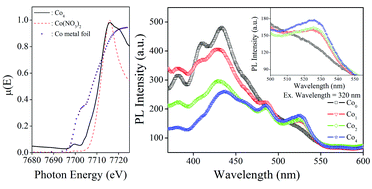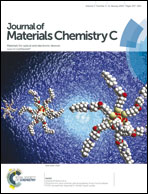Structural, optical and magnetic properties of sol–gel derived ZnO:Co diluted magnetic semiconductor nanocrystals: an EXAFS study
Abstract
Structural, local structural, optical and magnetic properties of sol–gel derived Zn1−xCoxO (0 ≤ x ≤ 0.04) nanoparticles have been studied. The crystallite structure, size, and lattice strain have been estimated by X-ray diffraction (XRD) with Rietveld refinement and high-resolution transmission electron microscopy (HRTEM). The small linear increase in lattice parameter ‘a’ and decrease in lattice parameter ‘c’ have been observed which can be attributed to the small distortion of Zn tetrahedron. Extended X-ray Absorption Fine Structure (EXAFS) measurements show that Co-doping creates oxygen vacancies without causing any significant change in the host lattice structure. X-ray Absorption Near Edge Structure (XANES) measurements rule out the presence of metallic Co clusters in the samples. Raman spectroscopy has been employed to study the crystalline quality, structural disorder, and defects in the host lattice. The tetrahedral coordination of the oxygen ions surrounding the zinc ions and wurtzite structure has been studied by FTIR analysis. UV-Vis measurements have been used to study the effect of Co-doping on absorption spectra and hence on the band gap. The band gap initially decreases for low Co-concentration and increases with higher Co-concentration. The PL spectra show six peaks out of which the peak in the ultraviolet (UV) region has been assigned to the near band edge excitonic emission (NBE) and other peaks are related to different defect states. Room temperature ferromagnetism (weak) is observed and magnetization increases with increasing Co-concentration. The grain boundaries, oxygen vacancy and bound magnetic polarons (BMPs) jointly may be responsible for this room temperature ferromagnetism. Variation of resistivity with temperature shows that a thermally activated conduction (Arrhenius) mechanism is valid in the high temperature region whereas Mott's variable-range hopping (VRH) mechanism is valid in the low temperature region.


 Please wait while we load your content...
Please wait while we load your content...